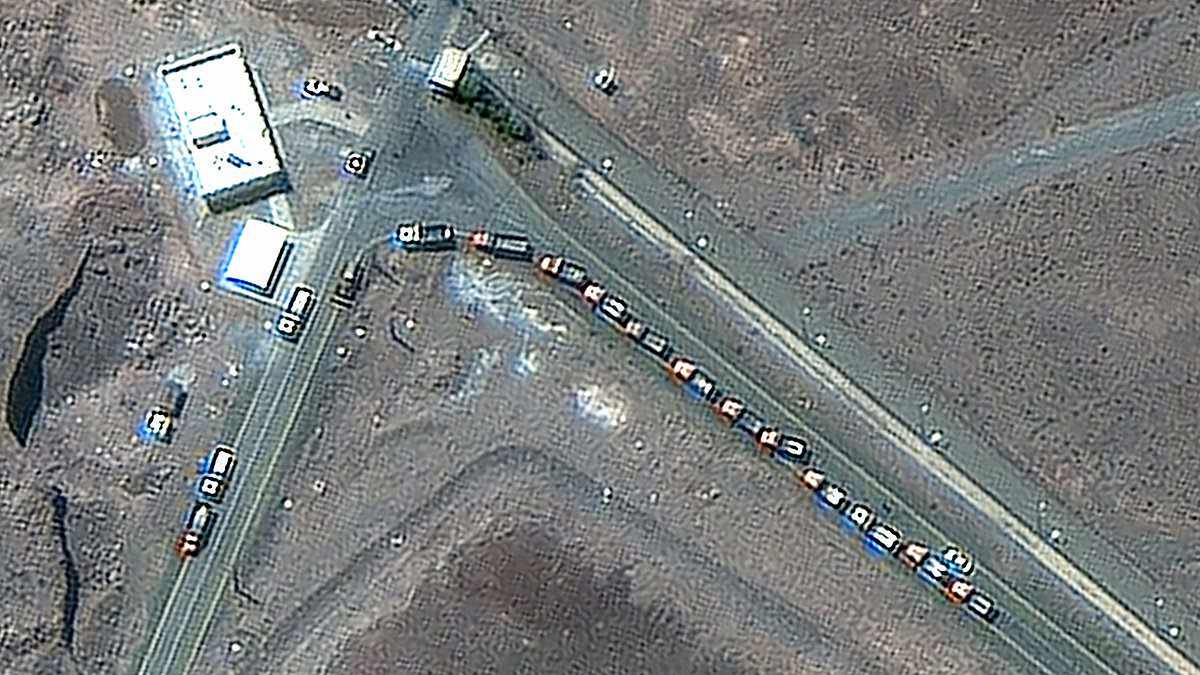More than five days after President Donald Trump ordered unprecedented US strikes on three Iranian nuclear facilities, Americans are just now starting to receive the first sober analysis of the attacks.
Though the assessments are not coming from the US government and, especially, not from the mainstream American media.
Over the past few days, many in the press have been chasing their tails over a classified Defense Intelligence Agency (DIA) report, which was disgracefully leaked by someone inside the Pentagon, Congress, or the US intel community.
Such a preliminary report, probably based primarily on satellite imagery and geospatial analysis, is considered a ‘low confidence’ assessment, for no one can determine with any high degree of certainty the status of a clandestine nuclear facility buried deep underground from images taken from outer space.
Moreover, whoever leaked this report – and likely many of those who reported on it – was more interested in doing a political hatchet job on the Trump administration than informing the public.
I, on the other hand, am relying on a far more apolitical source: the Israeli Atomic Energy Commission (IAEC).
Indeed, the IAEC is an Israeli government authority, but the IAEC has every incentive to understate, not overstate, the impact of the US strikes on the underground uranium enrichment plant at Fordow – the crown jewel of the Iranian nuclear program. Their findings are supported by other Israeli intelligence agencies.
Surely, the Israelis would be the first to advocate for additional strikes against Iranian nuclear targets if they believed a threat still existed. Logically, if they exaggerated the damage caused by the US attacks that would undermine their predicate for attacking Iran in the future to destroy any additional capabilities or nuclear weapons scientists.
But according to the IAEC, the job is done.
‘The devastating US strike on Fordow destroyed the site’s critical infrastructure and rendered the enrichment facility inoperable,’ read an IAEC statement released Wednesday. ‘We assess that the American strikes on Iran’s nuclear facilities, combined with Israeli strikes on other elements of Iran’s military nuclear program, has set back Iran’s ability to develop nuclear weapons by many years.’
That Israeli assessment, however, comes with a caveat.
The IAEC noted that the devastation of the Iranian nuke program can ‘continue indefinitely’ if Iran ‘does not get access to nuclear material.’
If Tehran was stashing enriched uranium outside of the facilities at Fordow or Natanz, which were both hit by American GBU-57 Massive Ordnance Penetrator bunker buster bombs, then they may have the ability to reconstitute their program, which brings us to the latest nuclear red herring.
Some in the media are raising alarm over publicly available satellite imagery that shows a line of cargo trucks parked outside Fordow in the days before the US strikes.
Defense Secretary Pete Hegseth was pressed on this during a Pentagon news conference on Thursday. ‘We’re looking at all aspects of intelligence and making sure we have a sense of what was where,’ he said.
I’m certain that both the US and Israeli intel have been looking into this. But I have serious doubts that the Iranians would have moved nuclear material out of Fordow in the days before the strike. It’s possible but it is far more likely that they were moving enrichment uranium or centrifuge parts into the heavily fortified mountain fortress.
The Iranians, fearing additional Israeli attacks, would most likely have transferred any valuable materials into Fordow, knowing that the Israelis lacked the bombs capable of penetrating the rock shield around the facility and doubting that Trump would order a strike.
Additionally, Tehran is well aware that Israel and the US have intelligence dominance over their entire country and would be closely monitoring the comings and goings at Fordow.
Would the Iranians really have risked loading enrichment uranium into trucks only for them to be tracked and destroyed by their enemies?
The idea strains credulity.
Finally, it would be a massive, unimaginable intelligence failure by Israel and the US, after demonstrating extraordinary and exquisite operational skills, to simply forget to monitor a line of cargo trucks leaving Fordow.
With that said, the Iranians were likely storing at least some enriched material in locations not destroyed in recent strikes.
The third Iranian nuclear facility targeted in the US attack was the Isfahan site, which was hit by Tomahawk missiles, likely leaving deep tunnels intact. If material was kept there, it may still be there.
That is why it is now critically important for the US to demand that Iranian Supreme Leader Ali Khamenei agree to full, transparent and verifiable nuclear disarmament as part of any ceasefire agreement. And no deal would be worth the paper that it is printed on without the threat of American and Israeli military might to enforce it.
There’s got to be a clear signal from President Trump that any indication that the Iranians are moving materials or rebuilding or hiding weaponization activities will result in an overwhelming US response. And if the US is not prepared to strike again, they need to give the Israelis the green light act and threaten the regime that any retaliation against Israel carries the risk of a US military response.
Make no mistake, Khamenei, 86 and ill, is hiding in a bunker somewhere watching the terror apparatus that he spent decades building, falling apart around him. But this is no time to let our guard down.
The regime in Iran is a badly wounded animal. But a wounded animal is perhaps the most dangerous.
Tehran still retains capabilities both for external aggression and internal repression.
But the world has gotten to the final chapter in the story of the Islamic Republic.
This is the beginning of the end of the regime.
